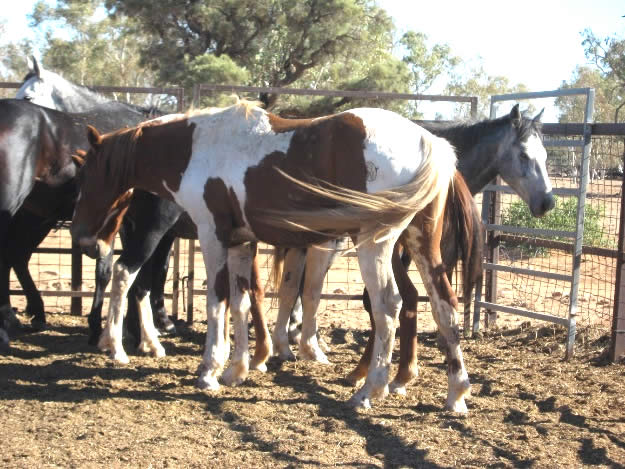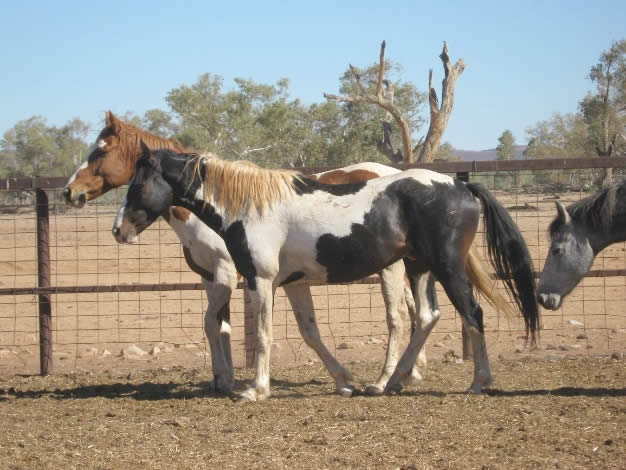Congenital Problems in Quarter Horses, Paints and Appaloosas

© Janet Lane, 2025. Image: Clayton Station Facebook page.
A significant proportion of Paints, Quarter Horses and Appaloosas carry serious congenital problems such as:
PSSM 1 (Polysaccharide Storage Myopathy)
PSSM 2 (Polysaccharide Storage Myopathy type 2)
HYPP (Hyperkalemic Periodic Paralysis)
MH (Malignant Hyperthermia)
GBED (Glycogen Branching Enzyme Deficiency)
HERDA (Hereditary Equine Regional Dermal Asthenia)
OLWS (Overo Lethal White Syndrome)
MYHM (Myosin Heavy Chain Myopathy)
IMM (Immune Mediated Myositis)
Some of these can be tested for in Australia (Practical Horse Genetics in Sydney can test for PSSM 1), however most need to be tested for in America.
American Paint mares often die when foaling, due to OLWS, and a foal born with this also dies within days of birth.
PSSM causes tying up, it’s a muscle disease.
Overo (white-over-dark body markings), particularly the frame pattern, can be a dangerous pattern. The head is often white or bald-faced, and blue eyes are not uncommon in the frame overo pattern.
The inverse is Tobiano, a safe pattern (look for the white crossing over the back ie large rounded colour spots of brown or black in a vertical pattern on a white base). Tovero is the cross so not recommended.


If a registered Waler presented with any of these congenital problems, or tested for them, it should be immediately de-registered. The only way to keep a breed safe is testing for suspected faults and de-registering if found. It is a strong sign the horse has American genetics hence is not a Waler.
Our Colour and Markings post discusses the overo issue in more detail.
Please read more about these congenital problems here:
6 Panel Genetic Testing: What to Know – AQHA
Practical Horse Genetics (Australia)
Polysaccharide Storage Myopathy Type 2 – Kentucky Equine Research